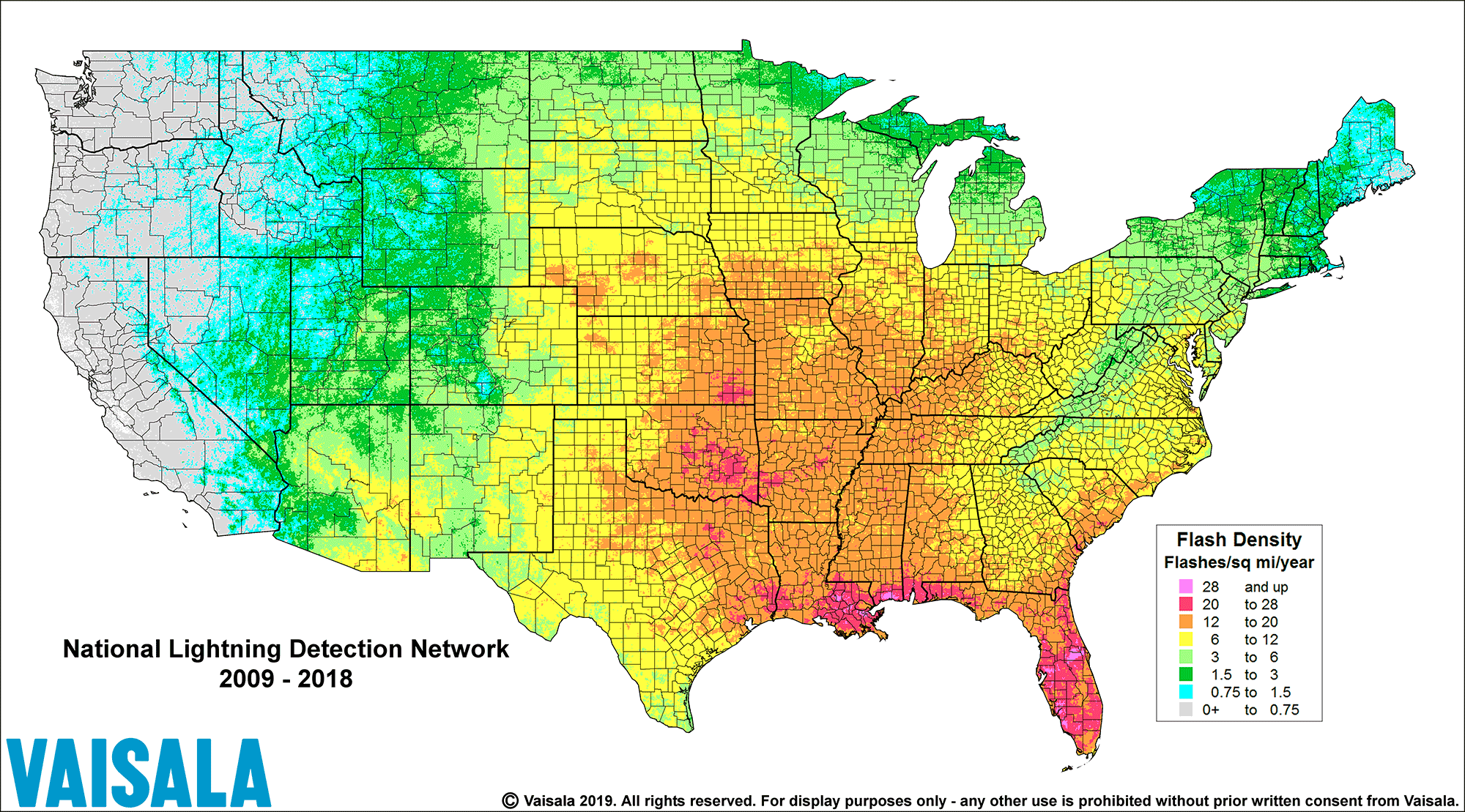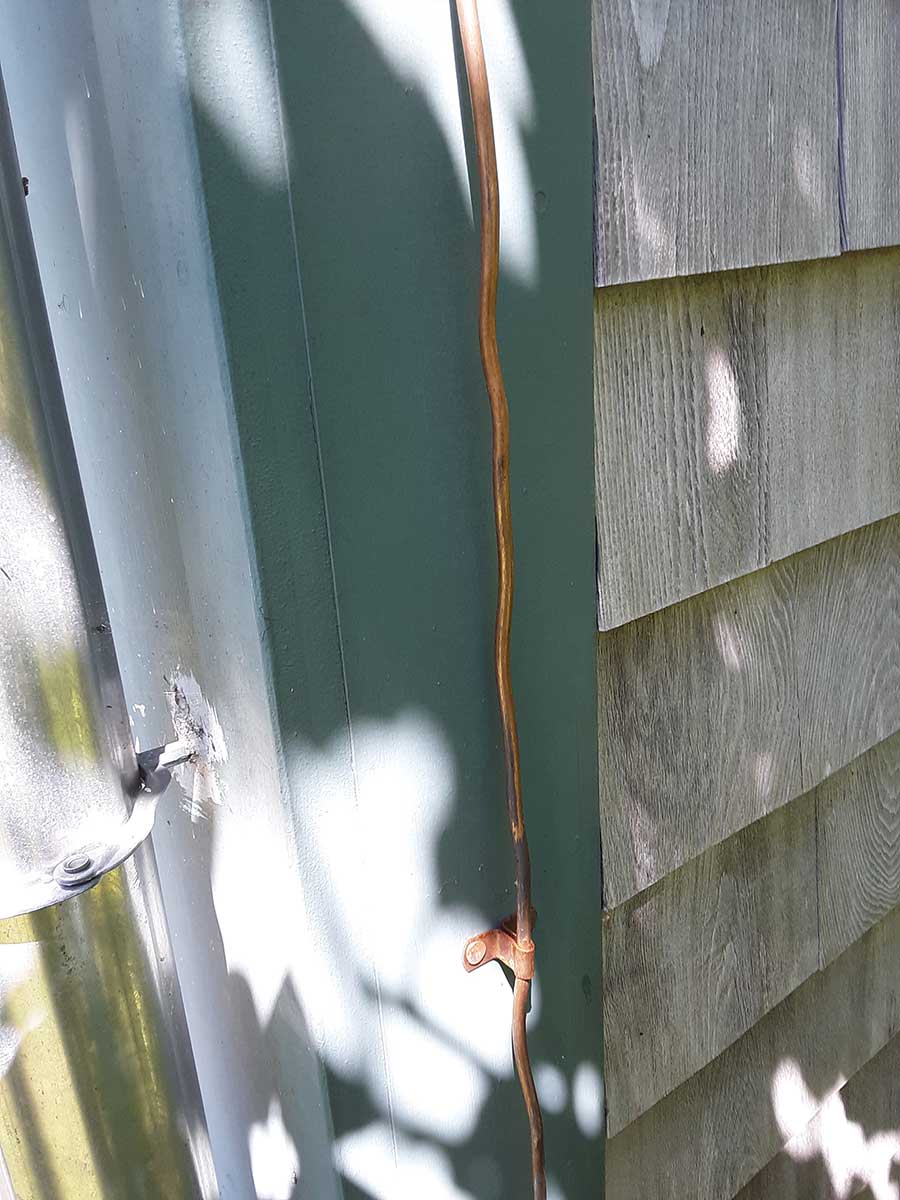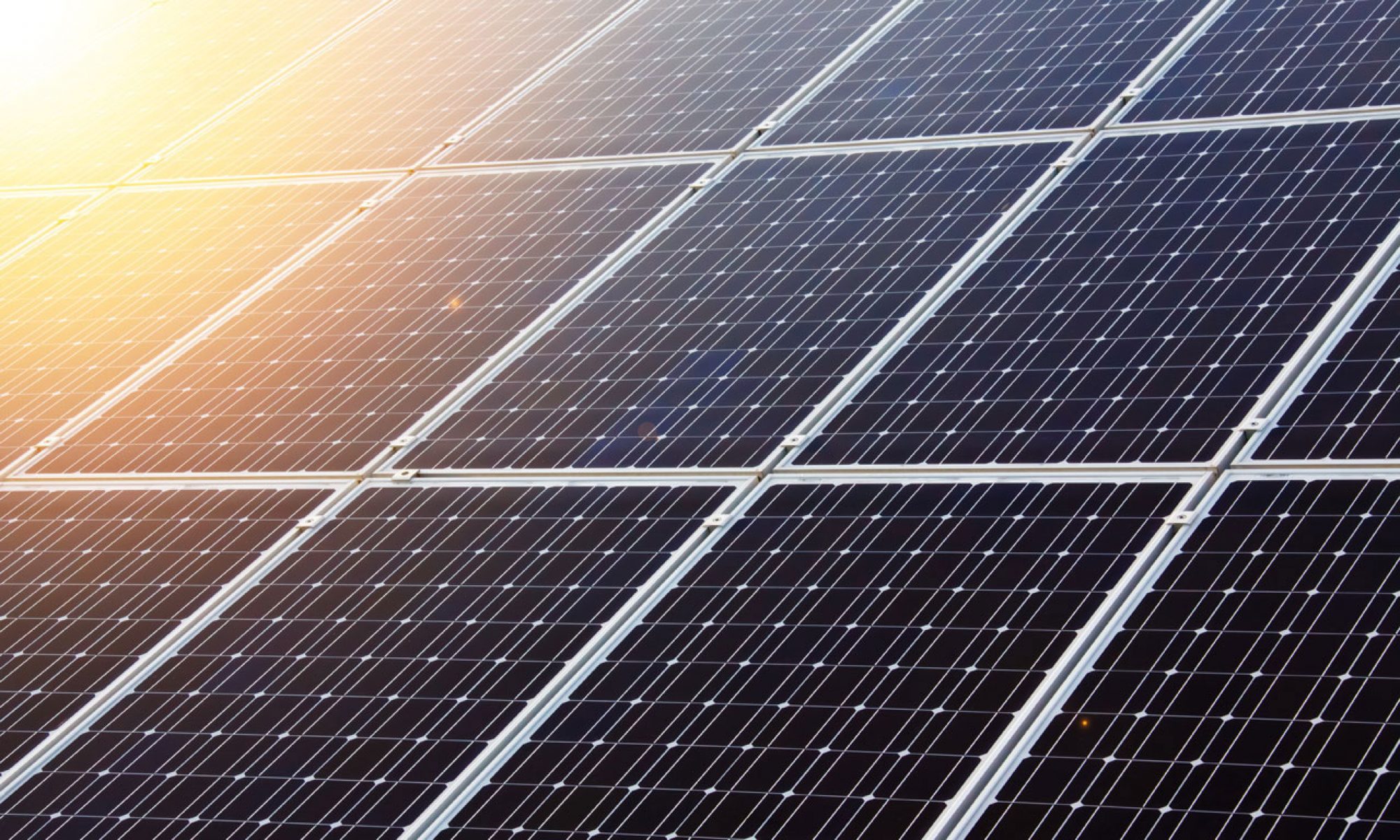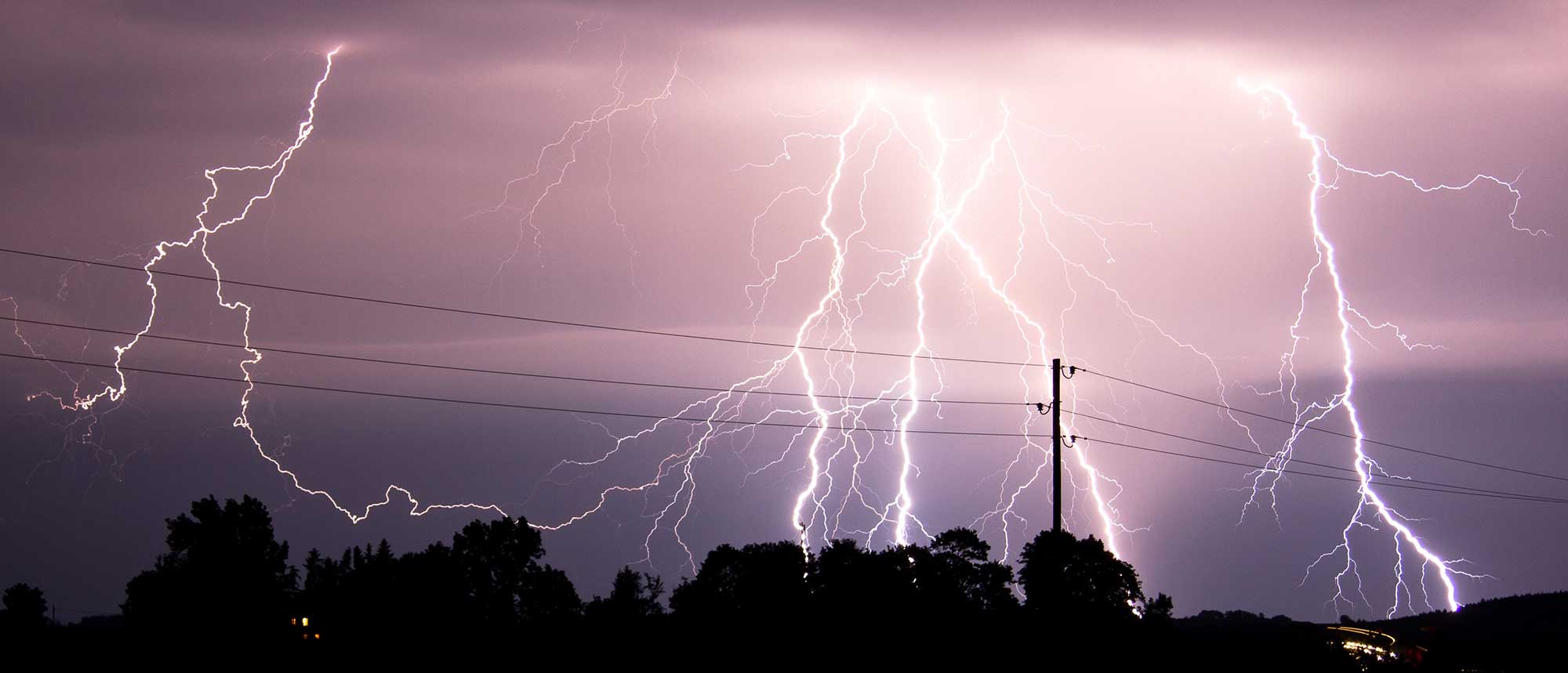Put a bunch of metal-framed objects on the roof, then connect them to the home’s electrical system, and the hazard of lightning becomes potentially quite serious. In doing research I found a wide range of opinions on this matter. Lightning is extraordinarily powerful and to some extent unpredictable–even experts disagree about the most effective mitigation measures. But after studying it I came away with two basic principles that guided my approach:
- When lightning strikes an object it will usually take the easiest path to the ground. If the path of least resistance to ground happens to be your array’s equipment ground conductor–or any conductors attached to your panels for that matter–then a massive surge of current could very easily damage or destroy expensive equipment and appliances. Worst case scenario, it could ignite a fire in your house. On the other hand, if you provide an easier path with less resistance directly to ground, bypassing the interior of your house, it’s much more likely the lightning current will take that route instead.
- Protect your equipment from current spikes with surge arrestors. Surge protective devices, or SPDs, make a good line of defense for valuable components like inverters or charge controllers. Lightning is potentially so powerful–up to hundreds of millions of volts–that no surge arrestor is 100% guaranteed to protect what’s behind it. But it’s better than having no protection and in most cases will do the job of absorbing/diverting the surge.
How big a risk is lightning? It depends. How prevalent is lightning in your area? And how exposed is your house?
You can answer the question of frequency with your own experience plus data. The map below shows the annual density of lightning by area throughout the U.S. Obviously if you live in Florida or Louisiana the risk is much greater than if you live in Oregon.

Where we live in Maine, lightning frequency is moderate but we do get the occasional thunderstorm particularly during the summer. Our house isn’t especially exposed, and there are tall trees near the house (not too near) that make a likelier target than the house itself. But a strike to the house is certainly possible and a nearby strike could still inflict damage.
Guided by the principles above, I decided to take two mitigation measures. First, I installed a 4-gauge solid copper conductor from the rooftop array directly to ground. The conductor clamps tightly onto one of the metal rails supporting the panels, runs down the eave, then down to a copper ground rod driven into the earth several feet from one corner of the house. This ground rod is connected or “bonded” to the rods installed by our electrician at the service entrance–it’s important to bond all the ground rods together (in our case that includes another pair of rods at the location of the inverter and battery bank). This setup provides a direct low-resistance path for the lightning current to reach ground without entering the house/destroying equipment/starting a fire.

Second, I installed an SPD at the main service panel to protect against lightning strikes (or other surges) coming from the grid, and will install SPDs at both combiner boxes and at the inverter. For the main panel I used a Siemens product called FirstSurge, which attaches to a knockout on the side of the panel and connects to a dedicated 20A circuit breaker on the main bus. For the other locations I’ll be using SPDs offered by MidNite Solar.
What does the National Electric Code have to say about protecting solar systems from lightning? This is addressed specifically in NFPA 780 “Standard for the Installation of Lightning Protection Systems.” Definitely have a good look at this. Rather than try to summarize everything here, I’ll simply highlight a few key recommendations:
- install SPDs close to the array and electrical systems
- install an SPD at the AC output of the inverter
- ensure all equipment is properly grounded
- enclose the PV output circuit in braided wire sheath, wire mesh screen, or bonded metal conduit
- ensure all lightning conductors run separately and outside the cable path of PV output circuit
The latest NEC (2020 edition) talks quite a bit about “zones of protection”–although there seems to be some disagreement about this concept in a home solar application. I decided to stick with these two basic measures for now knowing that my system will be much more resilient if a lightning strike every occurs (knock on wood!).
Useful Resources:
https://www.solarinsure.com/protect-your-solar-power-system-from-lightning
https://www.solar-electric.com/learning-center/solar-system-lightning-protection.html/
https://www.solarinsure.com/protect-your-solar-power-system-from-lightning


